 Orange-breasted Falcon (Falco deiroleucus)
Orange-breasted Falcon (Falco deiroleucus)
 Orange-breasted Falcon (Falco deiroleucus)
Orange-breasted Falcon (Falco deiroleucus) |
 |
| Pictures (click on them to enlarge) | ||
|---|---|---|
 © Foek Chin Joe | 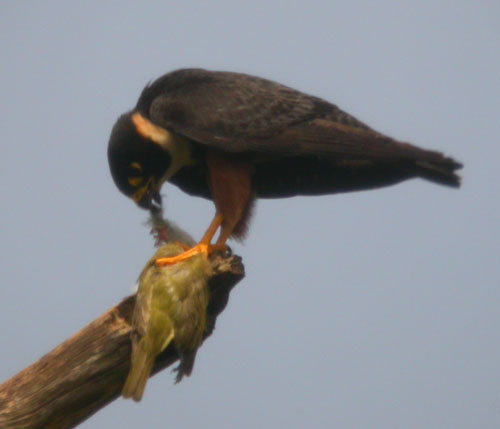 © Foek Chin Joe | 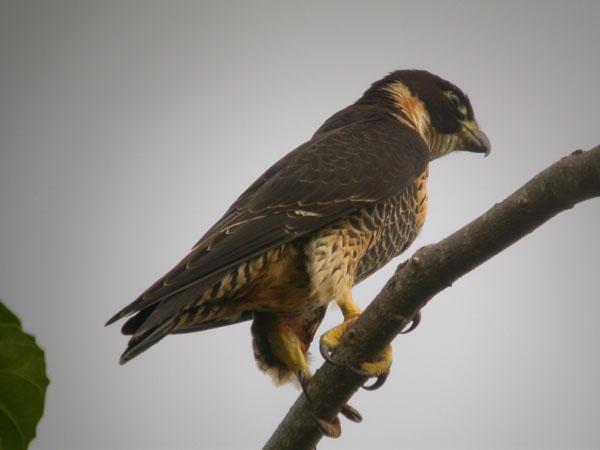 juvenile Par'bo © Foek Chin Joe |
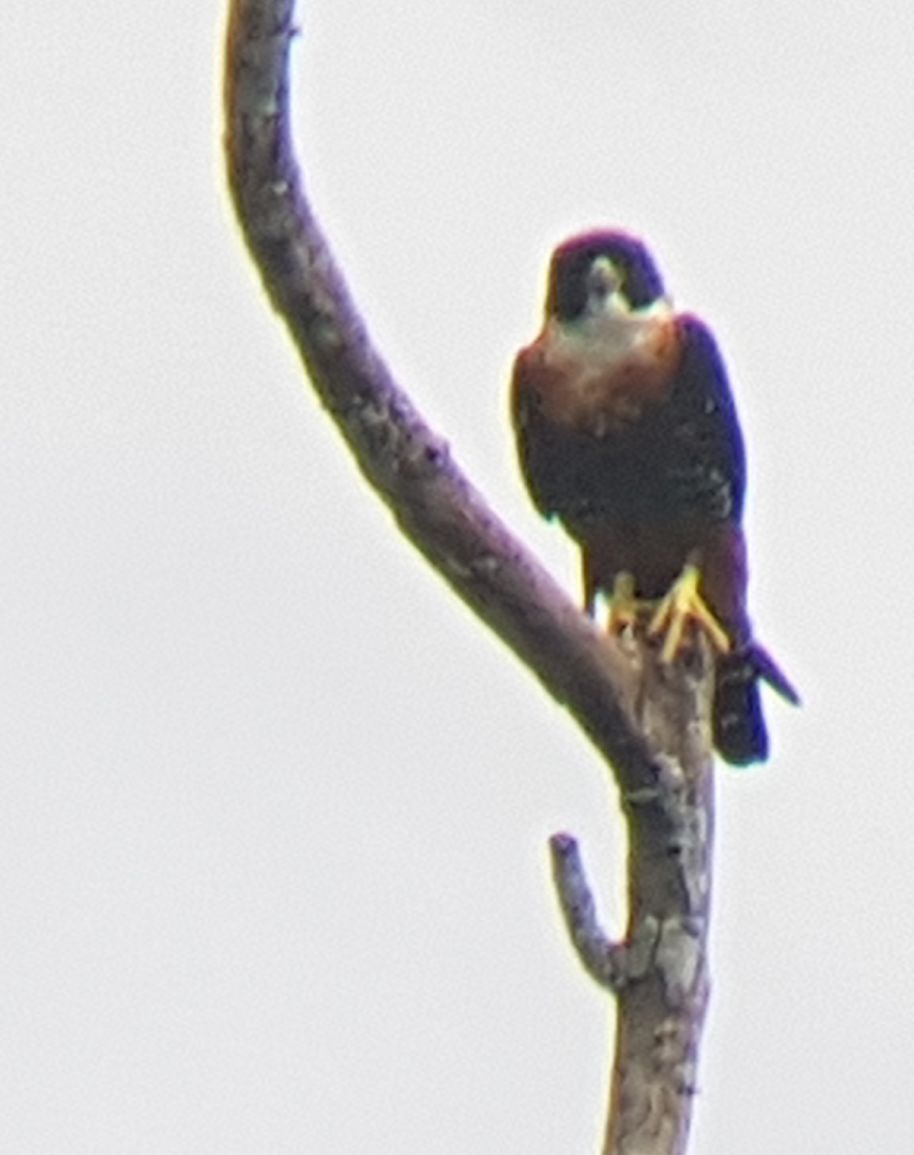 © Ralf Boobo | 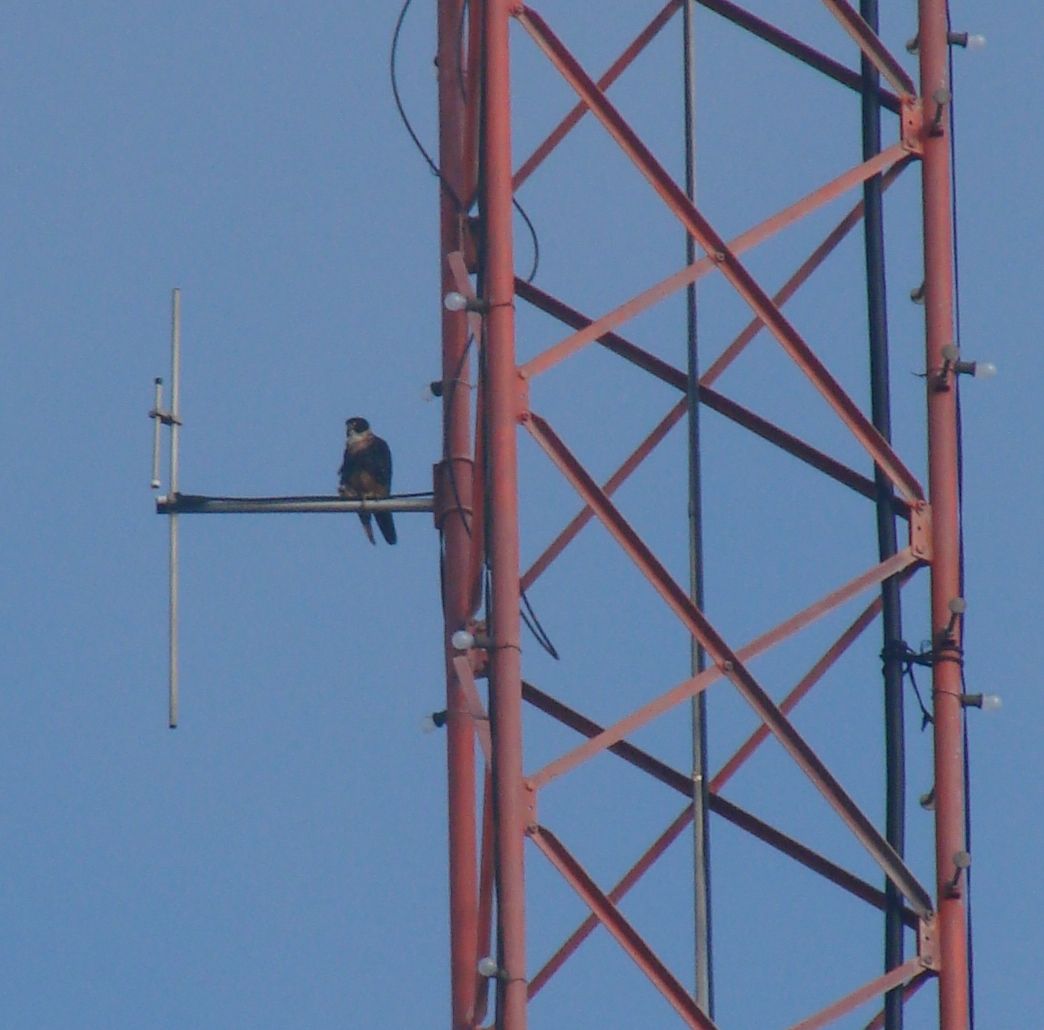 Par'bo © Dominiek Plouvier | 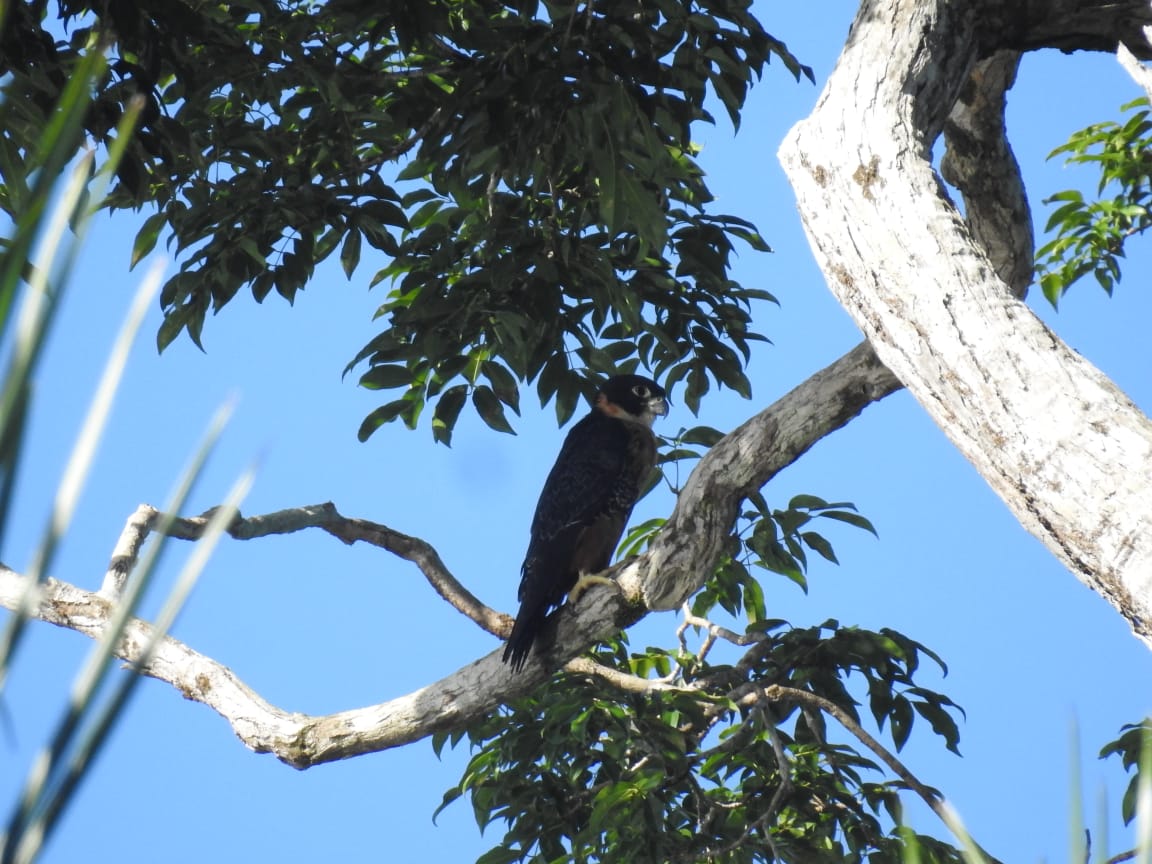 Commewijne © Dominiek Plouvier |
| Orange-breasted falcon:. This bird of prey can be easily confused with the smaller bat falcon, that is much more common in Suriname. The white throat above the orange breast and rather coarse white markings on the breast help to identify it. The talons are much bigger. Most of the time the bird sits perched like here to find its food (birds), which he catches by diving on them from above. Then he returns to the perch to pick the bird clean and eat it, like on the second picture below. The first photo of a Orange-breasted falcon was made by Foek Chin Joe on the Tafelberg in March 2005, the second one was also made by Foek Chin Joe, but now in the savanna (Matta) in August 2006, the bird eating a Palm tanager. The last picture is of a juvenile bird, also made by the same photographer in July 2006 in Paramaribo, where the orange-breasted is sometimes seen. Dominiek Plouvier shot the video. |
| Video (click the link or the 'play'-button to see) | ||
|---|---|---|
| Video recording of a Orange-breasted Falcon © ; |
|
|
||||||||||||||||||||||||||||||||||||||||||||
| Observations through the year | Observations of breeding through the year |
|---|---|
| The 61 reported observations of this bird in Suriname, mainly for the last 50 years up to 2018, have been grouped by month. More birds on one day are counted as one observation. Of course, if the graph should depict the total number of birds seen, the differences between the months could be much more pronounced. | The reported breeding observations of this bird in Suriname. Most observations are about nest with eggs, some about fledglings, or feeding at a nest or the building of a nest. Of the about 5000 nests and eggs found for all species together, about 1/3 comes from the egg collection of Penard between 1896 and 1905. For some reason most collecting then was done in the first half of each year, so the shown distribution does not necessarily reflect the actual breeding preferences. The main dry season in Suriname is reckoned to be from half August to the end of November, the main wet season from half April to half August, but the the timing of begin and end does vary from year to year. Around March a second dry season often occurs. |